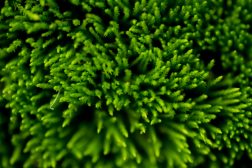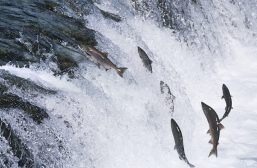Definition
noun, plural: siphonophores
Any of the various marine invertebrate of the order Siphonohorae of the class Hydrozoa that usually float or swim in delicate colonies
Supplement
Siphonophores are aquatic animals of the order Siphonophorae. They belong to the class Hydrozoa, which is comprised of marine mammals of the phylum Cnidaria. These animals are seen as colonies rather than solitary. They are transparent and float or swim as a colony. A single specimen is actually a colony comprised of polyps or zooids with specialized function. Each zooid in a colony is a single organism; however, it is interdependent to the other zooids comprising the colony and it would not be able to survive independently. Siphonores are therefore multiorganisms recognized as a colony. In a colony, there are three groups: (1) cystonects (i.e. colony comprised of pneumatophore and siphosome), (2) physonects (i.e. colony with pneumatophore, siphosome, and nectosome), and (3) calycophorans (i.e. colony with nectosome and siphosome).1 An example of a siphonophore is the Portuguese man’o war (Physalia physalis), which is a colony of polyps (or zooids) that looks like a jellyfish. Another is Praya dubia, which is regarded as the giant siphonophore for being one of the longest animals at 40 to 50 m in body length. Some species are capable of bioluminescence. For instance, Erenna species emit red light. It is considered as the first marine invertebrate known to produce red light and the first non-visual predator that uses a luminescent lure for its prey (i.e. fish). Most of the siphonores capture by casting a wide net of tentacles with stinging capsules called nematocyst.1
Word origin: Greek siphōn (“tube”) + pherein (“to bear”)
Scientific classification:
- Kingdom: Animalia
- Phylum: Cnidaria
- Class: Hydrozoa
- Subclass: Leptolinae
- Order: Siphonophorae Eschscholtz, 1829
Other name(s):
See also:
- hydrozoa
- pneumatophore
- siphosome
- nectosome
Reference(s):
1 Siphonophores. Siphonophores.org. Retrieved from ://www.siphonophores.org.







